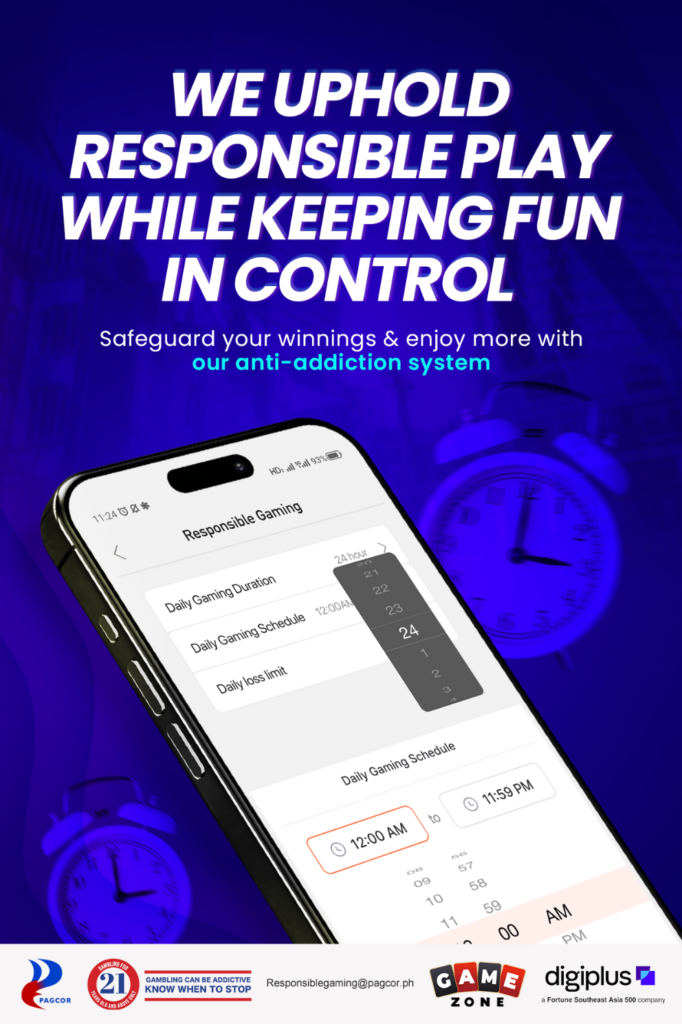Features
“The Real Zalman” – Life of the man who was undoubtedly the most controversial rabbi ever to live in Winnipeg examined in new book

Reviewed by BERNIE BELLAN On December 12, 2016 the Jewish Heritage Centre hosted an evening at the Asper Campus that was billed as “Rabbi Zalman Schachter and the Winnipeg origins of the Jewish Renewal Movement”.
I wrote about that meeting for this paper and my article about it can be found here: https://jewishpostandnews.ca/features/the-late-rabbi-zalman-schachters-time-in-winnipeg-recalled-at-lively-evening-hosted-by-jewish-heritage-centre/
During the course of that winter evening, various speakers, including his protegé, Rabbi Alan Green, spoke of the great impact Rabbi Schachter had on their lives. Yet, there was also a dissonant note, as several members in the audience were more disparaging in their recollections of Rabbi Schachter.
One theme that was raised throughout that evening, however, was the dearth of written information about Rabbi Schachter’s relatively lengthy stay in Winnipeg (from 1956-1975). I say “lengthy” because, after reading a just-published book about Rabbi Schachter, titled “The Real Zalman,” by Rabbi Chaim Dalfin, looking at the timeline that Rabbi Dalfin produced about Rabbi Schachter’s life makes you realize just how peripatetic he was.
But it’s not all the moves in Rabbi Schachter’s life that make him such a fascinating figure. No, it was his combination of scholarship, charisma – and undoubtedly controversy, that arguably make him the most fascinating rabbi ever to have set foot in this city.
However Rabbi Dalfin hasn’t written a typical biography. Certainly there is a great deal of information about Rabbi Schachter’s life, given in chronological order through the first five chapters of the book. But the final – and lengthiest chapter, deals with an interview that Rabbi Schachter (who by then had added the name “Shalomi” to his surname) gave to Rabbi Dalfin in his Boulder, Colorado home, in 2010, four years before Rabbi Schachter’s death.
You don’t have to be at all conversant with Chasidic Judaism, of which Rabbi Schachter was a follower for most of his life, until he broke away from the Lubavitcher movement in 1968 to found what became the “Jewish Renewal Movement,” in order to find this book quite interesting.
Here’s what Prof. Jonathan Sarna, Professor of Jewish History at Brandeis University, has to say about “The Real Zalman”: “A valuable contribution to the biography and understanding of “Reb Zalman”: founder of the Jewish Renewal Movement, disciple of Chabad-Lubavitch, and a controversial and pioneering rabbinic leader. Wonderful primary sources, including photographs, newspaper articles, and revealing interviews with Rabbi Zalman Schachter-Shalomi makes this a volume that anyone interested in post-war-American Judaism will want to consult.”
Who is Rabbi Chaim Dalfin? After speaking with him several times, I was impressed by how little bias he showed in talking about Rabbi Schachter, either pro or con, and how engaging he was. According to information provided by Rabbi Dalfin, he “has authored over 90 books, is a Chasidic Historian and Ethnographer. He also lectures on psychology and Judaism based on his book, ‘Tanya on Mental Health.’ His books have been endorsed by academic scholars and professors. He lives with his family in New York.”
Rabbi Dalfin’s interest – and it comes through clearly in the book, was to delve into the complex character of an individual who was very hard to pin down, without passing judgment about him to any great extent. (Rabbi Dalfin does explain though why the Lubavitcher movement finally tired of Rabbi Schachter, offering a clear explanation how what Schachter did deviated so thoroughly from Lubavitcher teachings.)
Of all the many aspects of Rabbi Schachter’s life, certainly the most controversial ones have to do with what was not only his open drug use (certainly his experimentation with LSD, taken together with the leading advocate for LSD, Timothy Leary, still comes as a shock to many who don’t tend to think of rabbis advocating using LSD), also his several marriages (four altogether), made him an easy target for criticism.
But Rabbi Dalfin is quite open-minded when it comes to trying to understand what might have motivated Rabbi Schachter to chart such an atypical path for someone who, after all, had been raised devoutly orthodox within the Lubavitcher community. The book offers both criticisms, as voiced by others, of Rabbi Schachter’s often erratic behavior, yet it also offers explanations for those same behaviors.
Winnipeggers especially might find the excerpts that deal with Rabbi Schachter’s 19 year sojourn here especially interesting.
There are many anecdotes, as told to Rabbi Dalfin through the course of the numerous interviews he conducted with a very large number of people who had got to know Rabbi Schachter here. Here, for instance, is an anecdote as told to Rabbi Dalfin by Joe Wilder, who was referred to as “Yossele Wilder” by Rabbi Schachter:
“In 1956, Yossele Wilder was the president of the Hillel House in Winnipeg. He greeted Zalman when he arrived the first time to check out the Hillel House. (Ed. Note: Rabbi Schachter’s first position when he moved to Winnipeg was director of Hillel.)
“After spending a half hour showing Zalman everything in the building, he noticed Zalman wearing a ring. It seemed strange because Zalman looked like a Chassidic rabbi, with his full beard. Wilder knew that Chassidic rabbis did not wear rings, especially not in 1956, so he asked him about it, and Zalman told him it was a Masonic ring.
“Yossele asked Zalman whether he was a Mason, and Zalman said yes. Yossele was most shocked, because, as far as he knew, the tenets of Masonry contradicted Torah. However, he did not press the issue.”
And neither does Rabbi Dalfin in the book. What he does instead, for the most part, is offer what other people had to say about Rabbi Schachter, often quoting newspaper articles that were written about him over the years.
Rabbi Schachter was also a follower of the late, esteemed head of the Lubavitcher movement for many years, Rabbi Menachem Mendel Schneerson, the Lubavitcher Rebbe. Despite the controversy associated with Rabbi Schachter throughout his adult life – and even somewhat before he became an adult, it seems, Rabbi Schneerson seemed to adopt a very patient stance when it came to tolerating Rabbi Schachter’s often shocking behavior. But, as Rabbi Dalfin notes, it might have been a bit much for Rabbi Schachter to claim, as he did, that he had Rabbi Schneeron’s blessing to take LSD.
Given how animated that December 2016 evening was when the subject of Rabbi Schachter was put out for discussion among a Winnipeg audience, one would think that a reprise of that evening would be in order, but this time there would be a book that could serve as the basis for discussion. (As my 2016 article noted, the only available accounts of Rabbi Schachters’ time in Winnipeg – to that point, were oral interviews given by 28 Winnipeggers that now reside in a collection at the University of Colorado in Boulder.)
“The Real Zalman” does much to complete the missing gaps in what we have known about a fascinating figure.
The Real Zalman
Published by JEP
May 2023
180 pages
(including 163 footnotes, 65 pictures, articles, timeline, bibliography & appendices)
“The Real Zalman” can be ordered directly from Rabbi Dalfin on his website, www.rabbidalfin.com or emailing him at info@rabbidalfin.com. For speaking engagements in your community email him.
Features
So, what’s the deal with the honey scene in ‘Marty Supreme?’

By Olivia Haynie December 29, 2025 This story was originally published in the Forward. Click here to get the Forward’s free email newsletters delivered to your inbox.
There are a lot of jarring scenes in Marty Supreme, Josh Safdie’s movie about a young Jew in the 1950s willing to do anything to secure his spot in table tennis history. There’s the one where Marty (Timothée Chalamet) gets spanked with a ping-pong paddle; there’s the one where a gas station explodes. And the one where Marty, naked in a bathtub, falls through the floor of a cheap motel. But the one that everybody online seems to be talking about is a flashback of an Auschwitz story told by Marty’s friend and fellow ping-ponger Béla Kletzki (Géza Röhrig, best known for his role as a Sonderkommando in Son of Saul).
Kletzki tells the unsympathetic ink tycoon Milton Rockwell (Kevin O’Leary) about how the Nazis, impressed by his table tennis skills, spared his life and recruited him to disarm bombs. One day, while grappling with a bomb in the woods, Kletzki stumbled across a honeycomb. He smeared the honey across his body and returned to the camp, where he let his fellow prisoners lick it off his body. The scene is a sensory nightmare, primarily shot in close-ups of wet tongues licking sticky honey off Kletzki’s hairy body. For some, it was also … funny?
Many have reported that the scene has been triggering a lot of laughter in their theaters. My audience in Wilmington, North Carolina, certainly had a good chuckle — with the exception of my mother, who instantly started sobbing. I sat in stunned silence, unsure at first what to make of the sharp turn the film had suddenly taken. One post on X that got nearly 6,000 likes admonished Safdie for his “insane Holocaust joke.” Many users replied that the scene was in no way meant to be funny, with one even calling it “the most sincere scene in the whole movie.”
For me, the scene shows the sheer desperation of those in the concentration camps, as well as the self-sacrifice that was essential to survival. And yet many have interpreted it as merely shock humor.
Laughter could be understood as an inevitable reaction to discomfort and shock at a scene that feels so out of place in what has, up to that point, been a pretty comedic film. The story is sandwiched between Marty’s humorous attempts to embarrass Rockwell and seduce his wife. Viewers may have mistaken the scene as a joke since the film’s opening credits sequence of sperm swimming through fallopian tubes gives the impression you will be watching a comedy interspersed with some tense ping-pong playing.
The reaction could also be part of what some in the movie theater industry are calling the “laugh epidemic.” In The New York Times, Marie Solis explored the inappropriate laughter in movie theaters that seems to be increasingly common. The rise of meme culture and the dissolution of clear genres (Marty Supreme could be categorized as somewhere between drama and comedy), she writes, have primed audiences to laugh at moments that may not have been meant to be funny.
The audience’s inability to process the honey scene as sincere may also be a sign of a society that has become more disconnected from the traumas of the past. It would not be the first time that people, unable to comprehend the horrors of the Holocaust, have instead derided the tales of abuse as pure fiction. But Kletzki’s story is based on the real experiences of Alojzy Ehrlich, a ping-pong player imprisoned at Auschwitz. The scene is not supposed to be humorous trauma porn — Safdie has called it a “beautiful story” about the “camaraderie” found within the camps. It also serves as an important reminder of all that Marty is fighting for.
The events of the film take place only seven years after the Holocaust, and the macabre honey imagery encapsulates the dehumanization the Jews experienced. Marty is motivated not just by a desire to prove himself as an athlete and rise above what his uncle and mother expect of him, but above what the world expects of him as a Jew. His drive to reclaim Jewish pride is further underscored when he brings back a piece of an Egyptian pyramid to his mother, telling her, “We built this.”
Without understanding this background, the honey scene will come off as out of place and ridiculous. And the lengths Marty is willing to go to to make something of himself cannot be fully appreciated. The film’s description on the review-app Letterboxd says Marty Supreme is about one man who “goes to hell and back in pursuit of greatness.” But behind Marty is the story of a whole people who have gone through hell; they too are trying to find their way back.
Olivia Haynie is an editorial fellow at the Forward.
This story was originally published on the Forward.
Features
Paghahambing ng One-on-One Matches at Multiplayer Challenges sa Pusoy in English

Ang Pusoy, na kilala din bilang Chinese Poker, ay patuloy na sumisikat sa buong mundo, kumukuha ng interes ng mga manlalaro mula sa iba’t ibang bansa. Ang mga online platforms ay nagpapadali sa pag-access nito. Ang online version nito ay lubos na nagpasigla ng interes sa mga baguhan at casual players, na nagdulot ng diskusyon kung alin ang mas madali: ang paglalaro ng Pusoy one-on-one o sa multiplayer settings.
Habang nailipat sa digital platforms ang Pusoy, napakahalaga na maunawaan ang mga format nito upang mapahusay ang karanasan sa laro. Malaking epekto ang bilang ng mga kalaban pagdating sa istilo ng laro, antas ng kahirapan, at ang ganap na gameplay dynamics. Ang mga platforms tulad ng GameZone ay nagbibigay ng angkop na espasyo para sa mga manlalaro na masubukan ang parehong one-on-one at multiplayer Pusoy, na akma para sa iba’t ibang klase ng players depende sa kanilang kasanayan at kagustuhan.
Mga Bentahe ng One-on-One Pusoy
Simpleng Gameplay
Sa one-on-one Pusoy in English, dalawa lang ang naglalaban—isang manlalaro at isang kalaban. Dahil dito, mas madali ang bawat laban. Ang pokus ng mga manlalaro ay nakatuon lamang sa kanilang sariling 13 cards at sa mga galaw ng kalaban, kaya’t nababawasan ang pagiging komplikado.
Para sa mga baguhan, ideal ang one-on-one matches upang:
- Sanayin ang tamang pagsasaayos ng cards.
- Matutunan ang tamang ranggo ng bawat kamay.
- Magsanay na maiwasan ang mag-foul sa laro.
Ang simpleng gameplay ay nagbibigay ng matibay na pundasyon para sa mas kumplikadong karanasan sa multiplayer matches.
Mga Estratehiya mula sa Pagmamasid
Sa one-on-one matches, mas madaling maunawaan ang istilo ng kalaban dahil limitado lamang ang galaw na kailangan sundan. Maaari mong obserbahan ang mga sumusunod na patterns:
- Konserbatibong pagkakaayos o agresibong strategy.
- Madalas na pagkakamali o overconfidence.
- Labis na pagtuon sa isang grupo ng cards.
Dahil dito, nagkakaroon ng pagkakataon ang mga manlalaro na isaayos ang kanilang estratehiya upang mas epektibong maka-responde sa galaw ng kalaban, partikular kung maglalaro sa competitive platforms tulad ng GameZone.
Mas Mababang Pressure
Dahil one-on-one lamang ang laban, mababawasan ang mental at emotional stress. Walang ibang kalaban na makaka-distract, na nagbibigay ng pagkakataon para sa mga baguhan na matuto nang walang matinding parusa sa kanilang mga pagkakamali. Nagiging stepping stone ito patungo sa mas dynamic na multiplayer matches.
Ang Hamon ng Multiplayer Pusoy
Mas Komplikado at Mas Malalim na Gameplay
Sa Multiplayer Pusoy, madaragdagan ang bilang ng kalaban, kaya mas nagiging komplikado ang laro. Kailangan kalkulahin ng bawat manlalaro ang galaw ng maraming tao at ang pagkakaayos nila ng cards.
Ang ilang hamon ng multiplayer ay:
- Pagbabalanse ng lakas ng cards sa tatlong grupo.
- Pag-iwas sa labis na peligro habang nagiging kompetitibo.
- Pagtatagumpayan ang lahat ng kalaban nang sabay-sabay.
Ang ganitong klase ng gameplay ay nangangailangan ng maingat na pagpaplano, prediksyon, at strategic na pasensiya.
Mas Malakas na Mental Pressure
Mas mataas ang psychological demand sa multiplayer, dahil mabilis ang galawan at mas mahirap manatiling kalmado sa gitna ng mas maraming kalaban. Kabilang dito ang:
- Bilisan ang pagdedesisyon kahit under pressure.
- Paano mananatiling focused sa gitna ng mga distractions.
- Pagkakaroon ng emosyonal na kontrol matapos ang sunod-sunod na talo.
Mas exciting ito para sa mga manlalarong gusto ng matinding hamon at pagmamalasakit sa estratehiya.
GameZone: Ang Bagong Tahanan ng Modern Pusoy

Ang GameZone online ay isang kahanga-hangang platform para sa mga naglalaro ng Pusoy in English. Nagbibigay ito ng opsyon para sa parehong one-on-one at multiplayer matches, akma para sa kahit anong antas ng kasanayan.
Mga feature ng GameZone:
- Madaling English interface para sa user-friendly na gameplay.
- Real-player matches imbes na kalaban ay bots.
- Mga tool para sa responsible play, tulad ng time reminder at spending limits.
Pagtatagal ng Pamanang Pusoy
Ang Pusoy card game in English ay nagpalawak ng abot nito sa mas maraming players mula sa iba’t ibang bahagi ng mundo habang pinapanatili ang tradisyunal nitong charm. Sa pamamagitan ng mga modernong platform tulad ng GameZone, mananatiling buhay at progresibo ang Pusoy, nakakabighani pa rin sa lahat ng antas ng manlalaro—mula sa casual enjoyment hanggang sa competitive challenges.
Mula sa maingat na pag-aayos ng mga cards hanggang sa pag-master ng estratehiya, ang Pusoy ay isang laro na nananatiling relevant habang ipinapakita ang masalimuot nitong gameplay dynamics na puno ng kultura at inobasyon.
Features
Rob Reiner asked the big questions. His death leaves us searching for answers.

Can men and women just be friends? Can you be in the revenge business too long? Why don’t you just make 10 louder and have that be the top number on your amp?
All are questions Rob Reiner sought to answer. In the wake of his and his wife’s unexpected deaths, which are being investigated as homicides, it’s hard not to reel with questions of our own: How could someone so beloved come to such a senseless end? How can we account for such a staggering loss to the culture when it came so prematurely? How can we juggle that grief and our horror over the violent murder of Jews at an Australian beach, gathered to celebrate the first night of Hanukkah, and still light candles of our own?
The act of asking may be a way forward, just as Rob Reiner first emerged from sitcom stardom by making inquiries.
In This is Spinal Tap, his first feature, he played the role of Marty DiBergi, the in-universe director of the documentary about the misbegotten 1982 U.S. concert tour of the eponymous metal band. He was, in a sense, culminating the work of his father, Carl Reiner, who launched a classic comedy record as the interviewer of Mel Brooks’ 2,000 Year Old Man. DiBergi as played by Reiner was a reverential interlocutor — one might say a fanboy — but he did take time to query Nigel Tufnell as to why his amp went to 11. And, quoting a bad review, he asked “What day did the Lord create Spinal Tap, and couldn’t he have rested on that day too?”
But Reiner had larger questions to mull over. And in this capacity — not just his iconic scene at Katz’s Deli in When Harry Met Sally or the goblin Yiddishkeit of Miracle Max in The Princess Bride — he was a fundamentally Jewish director.
Stand By Me is a poignant meditation on death through the eyes of childhood — it asks what we remember and how those early experiences shape us. The Princess Bride is a storybook consideration of love — it wonders at the price of seeking or avenging it at all costs. A Few Good Men is a trenchant, cynical-for-Aaron Sorkin, inquest of abuse in the military — how can it happen in an atmosphere of discipline.
In his public life, Reiner was an activist. He asked how he could end cigarette smoking. He asked why gay couples couldn’t marry like straight ones. He asked what Russia may have had on President Trump. This fall, with the FCC’s crackdown on Jimmy Kimmel, he asked if he would soon be censored. He led with the Jewish question of how the world might be repaired.
Guttingly, in perhaps his most personal project, 2015’s Being Charlie, co-written by his son Nick he wondered how a parent can help a child struggling with addiction. (Nick was questioned by the LAPD concerning his parents’ deaths and was placed under arrest.)
Related
None of the questions had pat answers. Taken together, there’s scarcely a part of life that Reiner’s filmography overlooked, including the best way to end it, in 2007’s The Bucket List.
Judging by the longevity of his parents, both of whom lived into their 90s, it’s entirely possible Reiner had much more to ask of the world. That we won’t get to see another film by him, or spot him on the news weighing in on the latest democratic aberration, is hard to swallow.
Yet there is some small comfort in the note Reiner went out on. In October, he unveiled Spinal Tap II: The Beginning of the End, a valedictory moment in a long and celebrated career.
Reiner once again returned to the role of DiBergi. I saw a special prescreening with a live Q&A after the film. It was the day Charlie Kirk was assassinated. I half-expected Reiner to break character and address political violence — his previous film, God & Country, was a documentary on Christian Nationalism.
But Reiner never showed up — only Marty DiBergi, sitting with Nigel Tuffnell (Christopher Guest), David St. Hubbins (Michael McKean) and Derek Smalls (Harry Shearer) at Grauman’s Chinese Theater in Los Angeles. The interview was broadcast to theaters across the country, with viewer-submitted questions like “What, in fact, did the glove from Smell the Glove smell like?” (Minty.) And “Who was the inspiration for ‘Big Bottom?’” (Della Reese.)
Related
- Actor-Director Rob Reiner dies at 78
- Carl Reiner On Judaism, Atheism And The ‘Monster’ In The White House
- Mandy Patinkin On His Favorite ‘Princess Bride’ Quote
DiBergi had one question for the audience: “How did you feel about the film?”
The applause was rapturous, but DiBergi still couldn’t get over Nigel Tuffnell’s Marshall amp, which now stretched beyond 11 and into infinity.
“How can that be?” he asked. “How can you go to infinity? How loud is that?”
There’s no limit, Tuffnell assured him. “Why should there be a limit?”
Reiner, an artist of boundless curiosity and humanity, was limitless. His remit was to reason why. He’ll be impossible to replace, but in asking difficult questions, we can honor him.
The post Rob Reiner asked the big questions. His death leaves us searching for answers. appeared first on The Forward.

